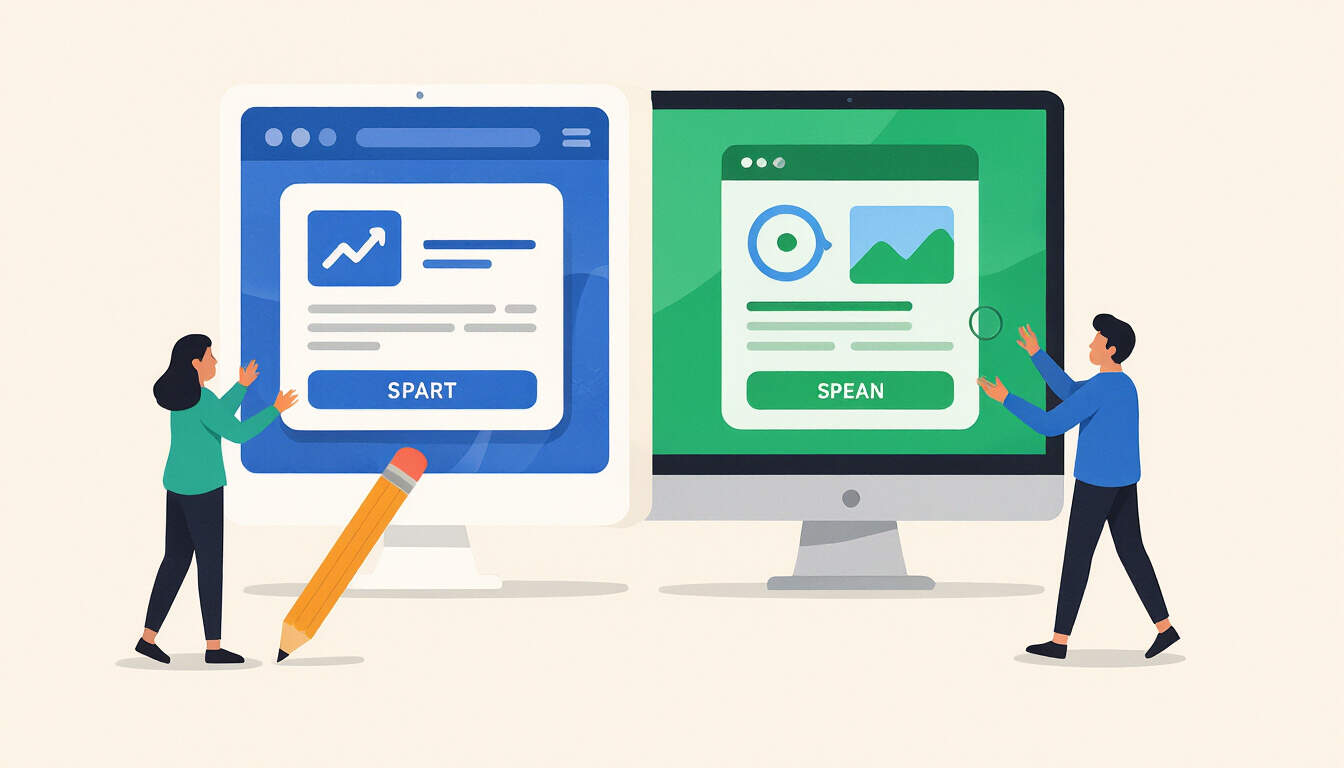Prototyping A/B Variations with Zero-Code Tools for MVP Validation
 by Thaddeus Blanda
by Thaddeus Blanda
Discover how zero-code tools simplify prototyping A/B variations to validate MVPs effectively. This approach helps entrepreneurs test ideas quickly, gather user feedback, and refine products without technical barriers, making innovation accessible and efficient.

Many entrepreneurs and product managers face challenges in testing ideas early. Using zero-code tools for prototyping A/B variations offers a practical solution. These tools allow for rapid creation of product versions without writing code, enabling quick validation of minimum viable products (MVPs).
One key aspect is the ability to build and compare different prototypes. For instance, you can create two versions of a landing page and test user preferences. This process helps in identifying what resonates with the audience, leading to better decision-making.
To start, consider tools like Bubble or Adalo. They provide intuitive interfaces for designing interactive prototypes. With these, you can set up MVP validation experiments in hours rather than weeks. The ease of use means teams can focus on core ideas instead of technical details.
Why Choose Zero-Code for A/B Testing
A/B variations involve comparing two or more options to see which performs better. In the context of MVPs, this means testing features or designs with real users. Zero-code platforms make this accessible by offering drag-and-drop builders and built-in analytics.
For example, platforms like Webflow let you prototype web pages quickly. You can duplicate a design, make changes, and deploy both versions for testing. This method reduces costs and speeds up iteration cycles, which is crucial for startups with limited resources.
Another advantage is user engagement data. Tools often include features to track interactions, such as clicks and time spent. By analyzing this, you gain insights into user behavior without needing advanced data tools.
Step-by-Step Strategies for Implementation
First, define your goals. What specific element are you testing? It could be a button color or a navigation layout. Once clear, use zero-code tools to build the variations.
Here’s a simple guide:
- Select a platform that supports A/B testing, such as Unbounce for landing pages.
- Create your base prototype and duplicate it.
- Modify the duplicate to introduce changes, like altering text or images.
- Set up routing to direct users to each version randomly.
- Launch the test and monitor results over a set period.
This approach ensures you gather reliable feedback. For instance, if one variation leads to higher conversion rates, it validates that design choice for your MVP.
Real-world applications show success stories. A startup used zero-code tools to test app interfaces, finding that a simpler layout increased user retention by 30%. Such outcomes motivate teams to experiment freely.
Overcoming Common Hurdles
Sometimes, integrating A/B variations can involve learning curves with new tools. Start with tutorials to build confidence. Many platforms offer free tiers, allowing you to experiment without commitment.
Collaboration is another area. Zero-code environments often support team editing, making it easier for non-technical members to contribute. This inclusivity fosters innovation and keeps the process engaging.
When evaluating results, look for patterns in user data. If zero-code tools reveal that one prototype outperforms another, use that insight to refine your MVP. Remember, the goal is to learn and improve iteratively.
Tools to Explore
Several options stand out for prototyping A/B variations:
- Bubble: Ideal for web apps, with visual programming for logic.
- Adalo: Great for mobile apps, allowing quick mockups and tests.
- Webflow: Perfect for websites, with responsive design capabilities.
- Unbounce: Focuses on landing pages and easy A/B setups.
Each tool provides templates and community resources, helping you get started fast. By leveraging these, you can turn ideas into testable prototypes efficiently.
In practice, combining tools can enhance results. For example, use one for building and another for analytics to get a fuller picture.
Motivation for Action
The beauty of zero-code approaches lies in their accessibility. Entrepreneurs can validate ideas without waiting for developers, accelerating product development. This method not only saves time but also builds confidence through tangible results.
As you implement these strategies, track progress and celebrate small wins. Each test brings you closer to a validated MVP, paving the way for successful launches. With persistence and the right tools, turning concepts into reality becomes straightforward and rewarding.
Ultimately, embracing prototyping A/B variations with zero-code methods empowers you to innovate confidently. It’s a step towards creating products that truly meet user needs, fostering growth and success in your ventures.
